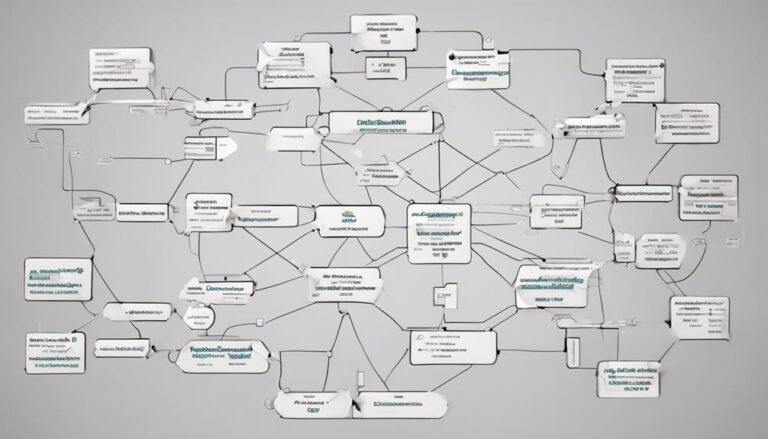Bill of Lading: Meaning, Types, Example, and Purpose
A Bill of Lading is an essential legal document provided by carriers to shippers, serving as proof of ownership and detailing important information about the shipped goods. It comes in various types such as Inland, Negotiable, and Claused, tailored to different transport needs and legal requirements. This document is necessary for smooth logistics operations, preventing theft, ensuring accountability, and facilitating international trade customs clearances. It plays a pivotal role in resolving conflicts, guaranteeing correct goods shipment, and maintaining asset security. Understanding its components like shipper details, goods description, and carrier signature is critical for accurate documentation and shipment processing.
Key Takeaways
- Legal document crucial for securing goods transport.
- Various types cater to different shipping needs.
- Contains shipper, goods, and carrier details.
- Prevents theft, aids conflict resolution, and eases insurance claims.
- Mandatory for customs clearance in international trade.
Definition and Importance of Bill of Lading
A bill of lading, an essential legal document issued by carriers to shippers, plays a pivotal role in accurately documenting and securing the transport of goods.
This document has deep historical significance, dating back to ancient times when merchants needed a way to prove the goods' ownership during transit. Today, it is a legal requirement for shipping goods domestically and internationally.
The bill of lading outlines vital information such as the type and quantity of goods being transported, the destination, and the terms of the shipment contract. By ensuring compliance with legal requirements and providing a detailed record of the goods being transported, the bill of lading acts as a cornerstone for smooth and secure logistics operations.
Types of Bill of Lading
Bill of Lading, an indispensable document in the logistics and shipping industry, manifests its versatility through various types tailored to different transportation needs and scenarios.
- Inland Bill of Lading: Used for transporting goods within a specific country.
- Negotiable Bill of Lading: Allows the transfer of goods to another party through endorsement.
- Claused Bill of Lading: Contains remarks or notations regarding the condition of the goods being shipped.
These types cater to a range of shipping regulations and the nature of goods being transported, ensuring compliance with specific requirements and smooth logistics operations. Adhering to the appropriate type is essential for efficient shipment handling and adherence to international shipping laws.
Processing and Example of Bill of Lading
Efficient management of shipment documentation is essential for smooth logistics operations and ensuring accurate delivery processes. A bill of lading is a legally binding document providing necessary details for shipment processing. It serves as a document of title, receipt, and transportation contract.
Internal controls, such as segregation of duties, are vital for theft prevention, and proper management of documents like the bill of lading is essential for asset security. Comparing the bill of lading with purchase orders for accuracy and reviewing documents before payment are key steps in maintaining asset security and smooth logistics operations.
Example scenarios, such as processing a shipment from a plant to a gas station or XYZ Fine Dining receiving fresh meat and fish shipments, highlight the importance of the bill of lading in ensuring secure asset management.
Components and Example of Bill of Lading
The detailed components of a bill of lading play a crucial role in accurately documenting and confirming the shipment details between parties involved in the transportation process. Key elements include:
- Shipper's information
- Consignee's information
- Description and quantity of goods
- Carrier representative's signature
An example scenario illustrating these components could involve ordering goods, reviewing the bill of lading for accuracy, and obtaining the necessary signatures. Document verification guarantees that the correct goods are being shipped, and shipment validation confirms that the right parties are involved in the transaction. Matching documents diligently helps prevent discrepancies and theft, safeguarding the interests of all parties concerned.
Purpose and Function of Bill of Lading
Discussing the purpose and function of a bill of lading sheds light on its integral role in the transportation and logistics processes of goods. This document not only serves as proof of shipment but also helps prevent asset theft by establishing ownership and specifying shipment terms.
In cases of disputes, the bill of lading can be pivotal in resolving conflicts, facilitating insurance claims, and providing evidence for damage assessment. Its role in ensuring accuracy and accountability among all parties involved is paramount.
Additionally, customs often require this document for clearance purposes, highlighting its significance in international trade. Overall, the bill of lading plays an important role in securing the proper delivery and payment for goods while serving as a valuable tool in preventing theft and resolving disputes.
Conclusion
To sum up, it is worth noting that the bill of lading plays a crucial role in the logistics and transportation industry, acting as a proof of contract and facilitating the smooth movement of goods.
Notably, based on a survey conducted by the World Economic Forum, 30% of global trade disputes are linked to issues with bill of lading documentation.
This fact highlights the significance of precise and effective management of bills of lading in supply chain operations.







